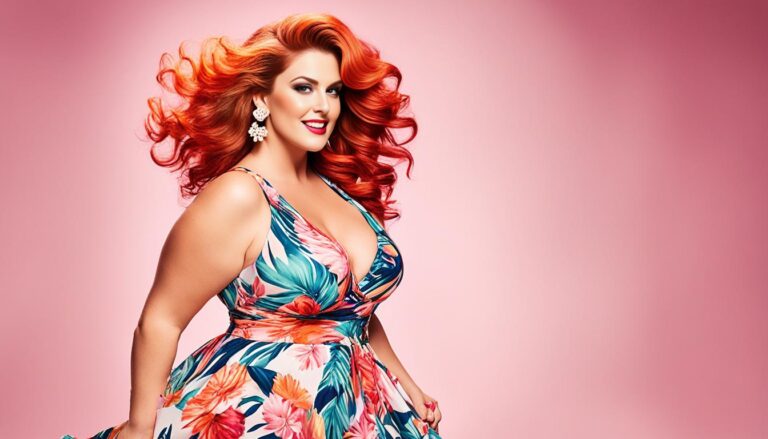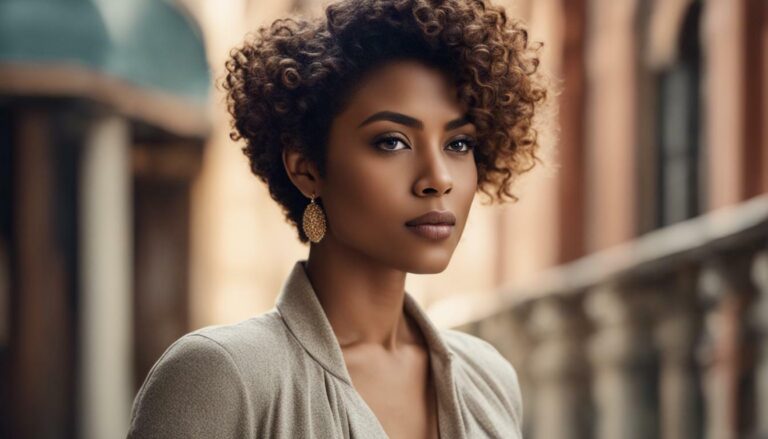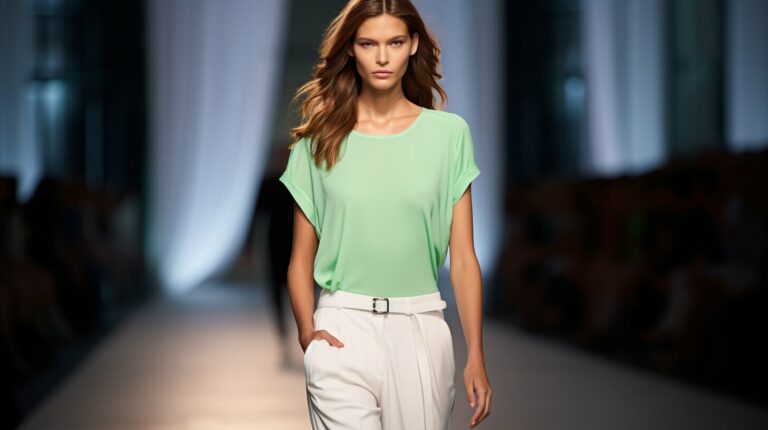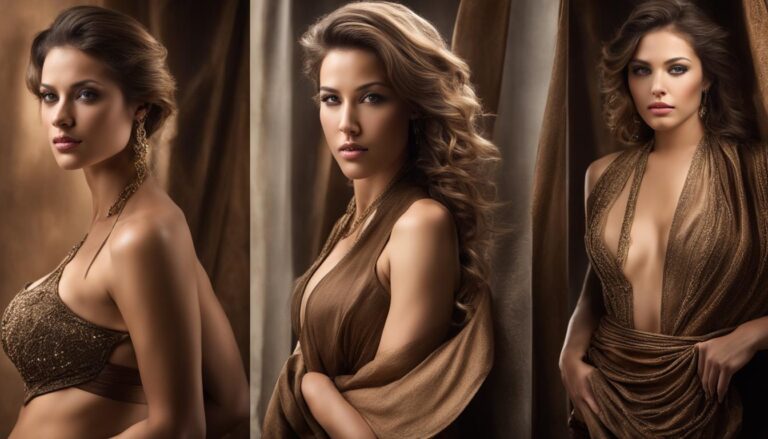What size woman does a man prefer?
When it comes to the ideal body size for men and the preferred female shape, there is no one-size-fits-all answer. However, research suggests that men are generally attracted to specific physical attributes in women that are considered to be the most attractive.
A study published in Eye on Psi Chi found that men are most attracted to women with a waist-to-hip ratio of 0.70. This preference for a smaller waist compared to the hips is seen across various cultures and may have a biological basis. Additionally, a study published in Social Psychology and Personality Science revealed that men also rated taller women as more attractive. Body mass index (BMI) was also found to be a factor in men’s preferences.
Key Takeaways:
- Men are generally attracted to women with a waist-to-hip ratio of 0.70.
- Height and body mass index (BMI) also play a role in men’s preferences.
- These preferences may be influenced by biological factors.
Men’s Preferences in Women’s Body Size
When it comes to men’s preferences in women’s body size, studies have shed light on the subject, revealing interesting insights. A study conducted by the social media dating site Badoo surveyed 2,000 men, and the results indicated that the majority of men preferred women with a dress size of 14 to 16. In contrast, only 10% of men preferred women between size 8 and 10, and a mere 4.2% showed a preference for women size 20 or over. These findings suggest that men generally lean towards women with fuller figures.
Another study highlighted in New Scientist explored the concept of men’s ideal female shape. The research concluded that men’s perception of the ideal female body closely matched a British size 14, which is considered a normal body size for women. This correlation between the preference for fuller figures and the ideal female shape indicates a general acceptance and attractiveness associated with this body size.
Understanding men’s preference in women’s body size is instrumental in evaluating body size preferences in relationships. The studies mentioned above offer valuable insights into male perception of ideal female body size and provide a broader perspective on the dynamics of attraction in relationships. It is important to note that these preferences can vary among individuals, and personal preferences may differ from societal norms and average preferences.
Men’s Attraction to Fuller Figures
The preference for fuller figures observed in men’s body size preferences can be attributed to multiple factors. Historically, fuller figures have been associated with fertility and the ability to bear healthy offspring, making them inherently attractive to men. Evolutionarily, this preference can be linked to the survival and reproductive success of the species.
“The majority of men preferred women with a dress size of 14 to 16.”
Additionally, cultural influences, media representation, and societal beauty standards play a role in shaping men’s preferences. While these external factors can promote unrealistic body ideals, studies consistently show that men generally gravitate towards women with fuller figures. This aligns with the concept of body positivity, which encourages acceptance and celebration of diverse body sizes and shapes.
Body size and attractiveness in men’s preferences
The studies mentioned previously highlight the significant role that body size plays in men’s attractiveness judgments. Men generally find women with a lower waist-to-hip ratio and fuller figures more appealing. These preferences may be influenced by notions of fertility and reproductive fitness, as men tend to be drawn to features that suggest the ability to successfully conceive and nurture offspring. It’s important to note that individual preferences can vary, and personal taste may differ from societal norms.
The Role of Waist-to-Hip Ratio
One key aspect that affects men’s preferences for body size is the waist-to-hip ratio. Research consistently shows that men find women with a waist-to-hip ratio of 0.70 to be most attractive. This ratio indicates an hourglass figure, with a narrower waist in relation to wider hips. The hourglass shape is often associated with femininity and has been regarded as an ideal body shape across various cultures.
Studies have suggested that men’s preference for a lower waist-to-hip ratio may be rooted in evolutionary biology. A smaller waist compared to the hips is perceived as indicative of good health and fertility. In evolutionary terms, it is believed that men are naturally drawn to features that signal the ability to bear children and successfully continue the lineage.
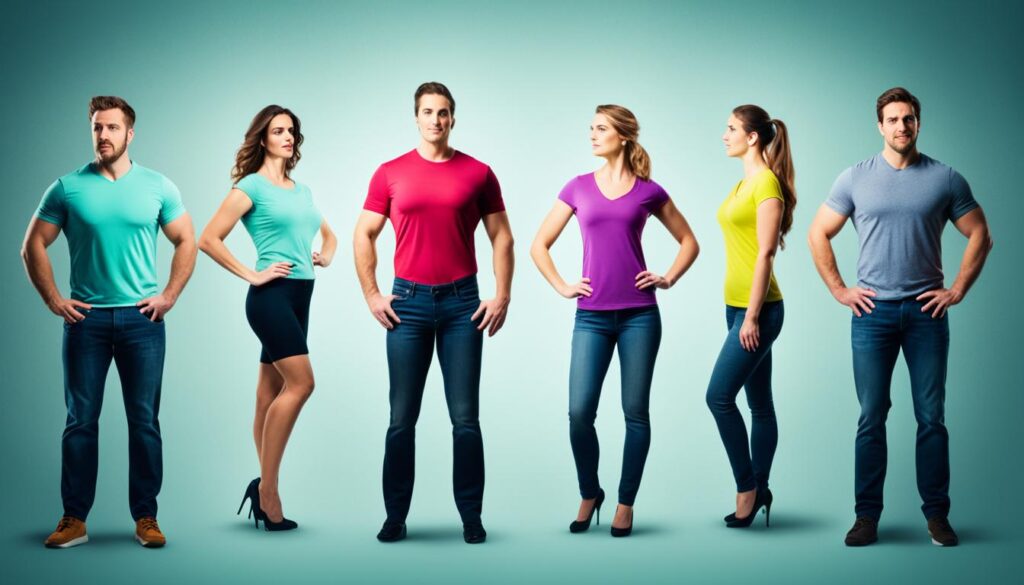
Having a fuller figure is also a characteristic that men commonly find appealing. Men’s preference for women with fuller bodies may be linked to cultural and societal factors. In many societies, women with more curves and a higher body mass index (BMI) have been historically associated with good health, prosperity, and fertility.
Perceptions of Beauty and Reproductive Fitness
Men’s attraction to certain body sizes can also be associated with perceptions of reproductive fitness. A study published in Personality and Individual Differences found that men considered women with normal-weight bodies to be more attractive compared to underweight or overweight women. This suggests that men may subconsciously associate a healthy body size with increased reproductive potential.
Moreover, another study published in PLoS ONE found that men rated women with average-size bodies as healthier and more attractive compared to very thin or slightly overweight women. This preference for average body sizes further emphasizes the importance of balance and moderation in men’s attractiveness judgments.
Understanding Individual Preferences
While studies provide valuable insights into men’s preferences for body size, it is essential to recognize that preferences can vary among individuals. Personal taste, cultural influences, and societal standards can all play a role in shaping an individual’s perception of attractiveness.
It is important to approach discussions around men’s preferences in body size with sensitivity and respect for diverse perspectives. Everyone is entitled to their own preferences, and beauty comes in many different shapes and sizes. Emphasizing body positivity and promoting acceptance of diverse body types can help create a more inclusive and healthy environment for all.
| Study | Findings |
|---|---|
| Study 1 | Men find women with a waist-to-hip ratio of 0.70 most attractive. |
| Study 2 | Men generally prefer women with fuller figures and an average body size. |
| Study 3 | Perceptions of attractiveness may vary depending on cultural and societal influences. |
| Study 4 | Men associate certain body sizes with fertility and reproductive fitness. |
Influence of Cultural Standards and Societal Pressures
Society and media have a powerful influence on our perceptions of attractiveness and body size. While studies suggest that men generally prefer women with fuller figures, societal pressures often promote unrealistic and unattainable body ideals.
The media, including fashion magazines, movies, and advertisements, play a significant role in shaping beauty standards. These standards often prioritize slim and slender figures, creating a narrow definition of what is considered attractive. This can lead to body image issues and dissatisfaction among both men and women.
It is important to recognize the impact of cultural standards on body size and strive for body positivity and acceptance of diverse body sizes and shapes. By challenging narrow beauty ideals, we can create a society that celebrates and embraces the beauty of all individuals.
“The idealization of a particular body size perpetuated by media and society can be damaging to individuals’ self-esteem and body image.” – Dr. Jane Thompson, Psychologist
Media’s Influence on Body Ideals
The media plays a significant role in shaping body ideals and influencing our perceptions of attractiveness. Advertisements often feature models with slim and toned bodies, giving the impression that this is the preferred body size.
| Media Influence on Body Ideals | Effects on Individuals |
|---|---|
| Incessant portrayal of slim body types as desirable | Increased body dissatisfaction |
| Limited representation of diverse body sizes | Low self-esteem and negative body image |
| Pressure to conform to unrealistic beauty standards | Eating disorders and unhealthy weight loss behaviors |
It is crucial to recognize the harmful effects of these media influences and strive for a more inclusive representation of body sizes and shapes.
Fighting Societal Pressures on Body Image
To combat the negative effects of societal pressures on body image, we need to promote body positivity and acceptance. Here are some ways to challenge cultural standards and encourage a healthier body image:
- Advocate for diverse representation in media: Push for more inclusive and realistic portrayals of body sizes and shapes in the media to showcase that beauty comes in all forms.
- Promote self-acceptance: Encourage individuals to embrace their unique body sizes and foster a culture of self-love and acceptance.
- Educate about media literacy: Teach individuals to critically analyze media messages and challenge unrealistic beauty standards.
- Support positive body image campaigns: Get involved in initiatives that raise awareness about the importance of body positivity and challenge narrow beauty ideals.
By working together to challenge societal pressures and promote body positivity, we can create a more inclusive and accepting cultural standard for body size, benefiting individuals of all shapes and sizes.
Conclusion
In conclusion, men’s preferences in women’s body size can vary widely. While studies suggest that men are generally attracted to women with a waist-to-hip ratio of 0.70 and fuller figures, it is important to remember that personal preferences can differ among individuals. Society and media often promote unrealistic body ideals, which can impact body image and self-esteem. It is crucial to prioritize self-acceptance and promote body positivity, celebrating diverse body sizes and shapes. Understanding the complexities of attraction and recognizing individual preferences can lead to healthier attitudes towards body size and encourage more inclusive beauty standards.
FAQ
What is the ideal body size for men when it comes to women?
Studies have shown that men are most attracted to women with a waist-to-hip ratio of 0.70. This preference for a smaller waist compared to the hips is seen across various cultures and may have a biological basis. Additionally, men also tend to rate women who are taller than average as more attractive, and body mass index (BMI) is a factor in their preferences.
What size of women do men generally prefer?
According to a study conducted by Badoo, the majority of men (around 56%) prefer women with a dress size of 14 to 16. Only 10% of men prefer women between size 8 and 10, and 4.2% prefer women size 20 or over. This suggests that men generally prefer women with fuller figures.
What do men find appealing in a woman’s body size?
Men tend to find women with a lower waist-to-hip ratio and fuller figures more attractive. These preferences may be linked to notions of fertility and reproductive fitness, as men are naturally drawn to features that indicate the ability to successfully conceive and nurture offspring.
How do societal pressures and cultural standards influence men’s preferences in women’s body size?
Society and media play a significant role in shaping ideals of attractiveness and body size. While studies suggest that men generally prefer women with fuller figures, societal pressures often promote unrealistic and unattainable body ideals, such as the slim and slender figures commonly seen in fashion and media. This can contribute to body image issues and dissatisfaction among both men and women.
What is the conclusion on men’s preferences in women’s body size?
Men’s preferences in women’s body size can vary widely. While studies suggest that men are generally attracted to women with a waist-to-hip ratio of 0.70 and fuller figures, it is important to remember that personal preferences can differ among individuals. Society and media often promote unrealistic body ideals, which can impact body image and self-esteem. It is crucial to prioritize self-acceptance and promote body positivity, celebrating diverse body sizes and shapes. Understanding the complexities of attraction and recognizing individual preferences can lead to healthier attitudes towards body size and encourage more inclusive beauty standards.


